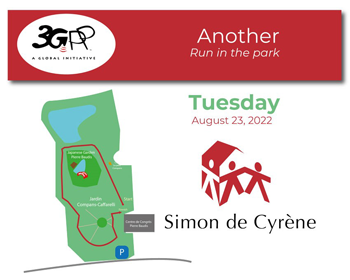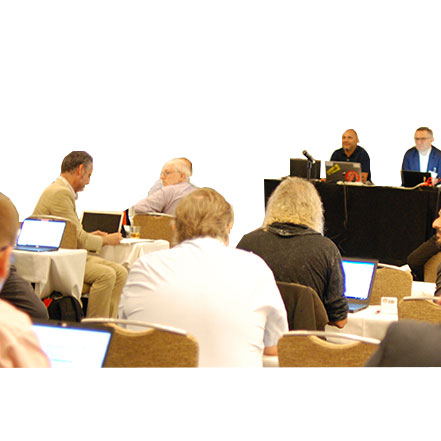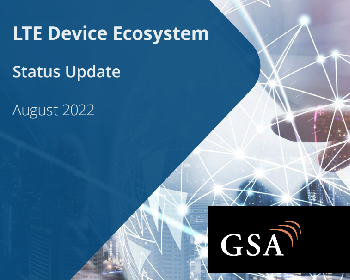Public Safety

Updated: July 2013
Delivering Public Safety Communications with LTE
Today there are two separate technology families for providing wide-area wireless communications: commercial cellular networks and dedicated public safety systems.
To provide the best service to both communities there is now industry support for greater use of common technology. Work underway in Release 12 of 3GPP LTE standards will enhance LTE to meet public safety application requirements.
Public safety networks provide communications for services like police, fire and ambulance. In this realm the requirement has been to develop systems that are highly robust and can address the specific communication needs of emergency services. This has fostered public safety standards – such as TETRA and P25 – that provide for a set of features that were not previously supported in commercial cellular systems. These standards have also been applied to commercial critical communications needs such as airport operations.
Public safety users are an important community both economically and socially but the market for systems based on public safety standards is much smaller than for commercial cellular. Specialised public safety and critical communications technology cannot attract the level of investment and global R&D that goes in to commercial cellular networks. Establishing common technical standards for commercial cellular and public safety offers advantages to both communities:
- The public safety community gets access to the economic and technical advantages generated by the scale of commercial cellular networks, and
- The commercial cellular community gets the opportunity to address parts of the public safety market as well as gaining enhancements to their systems that have interesting applications to consumers and businesses.
A strong standards-based approach will ensure interoperability between different vendors leading to a competitive equipment market.
Global Public Safety Community Aligning Behind LTE
Early leadership in applying LTE to public safety applications came from the USA. The National Public Safety Telecommunications Council (NPSTC) and other organizations recognized the desirability of having an interoperable national standard for a next generation public safety network with broadband capabilities. In June 2009 the NPSTC decided on LTE as their platform for this national network [1]. The USA has reserved spectrum in the 700MHz band for an LTE based public safety network and in early 2012 committed US$7billion in funding[2][3].
{vimeo}67300732|350|175|0{/vimeo}After their decision to adopt LTE the NPSTC started an active engagement with the LTE standards community in 3GPP to create the system improvements needed to meet public safety requirements. Throughout this work the NPSTC have expressed a strong desire, which has been welcomed by the commercial cellular community, to implement as many of the public safety requirements as possible in a way that is also attractive for consumer and business applications.
A variety of standards are currently used for public safety communications globally. Outside of North America the leading public safety standard is Terrestrial Trunked Radio, TETRA. Enhanced TETRA standards already support medium speed data (hundreds of kilobits per second) but it is recognized that new technology is needed to add true mobile broadband capabilities. The Tetra and Critical Communications Association (TCCA) represents the views of TETRA and other critical communication technology users and manufacturers. In mid 2012 the TCCA said [4]:
“The TETRA and Critical Communications Association (TCCA) has an objective of driving the development of Mobile Broadband solutions for the users of Mission Critical and Business Critical mobile communications. Having reviewed existing technologies the TCCA believes that LTE holds the greatest prospect for delivering such solutions. As a result the TCCA intends to work with 3GPP to include the functionality necessary within the LTE standard to meet that objective.”
With NPSTC, TCCA, ETSI Technical Committee TETRA and other organizations backing LTE there is now a clear global consensus that LTE will be the baseline technology for next generation broadband public safety networks.
Technical Features for LTE Public Safety
The technical work to produce enhancements to the LTE standard to support public safety applications is taking place in 3GPP. Cooperation has been established between 3GPP and other groups such as ETSI TC TETRA, TCCA and US National Institute of Standards and Technology (NIST) to ensure broad representation of the public safety community. 3GPP’s objective is to preserve the considerable strengths of LTE while also adding features needed for public safety. A further goal is to maximise the technical commonality between commercial and public safety aspects to provide the best and most cost effective solution for both communities.
So far, two main areas of 3GPP LTE enhancement have been agreed in 3GPP to address public safety applications:
- Proximity services that identify mobiles in physical proximity and enable optimized communications between them.
- Group call system enablers that support the fundamental requirement for efficient and dynamic group communications operations such as one-to-many calling and dispatcher working.
Associated with these areas will be security features to protect the system from fraudulent users, eavesdropping and other malicious attacks.
Proximity services consists of two main elements: network assisted discovery of users with a desire to communicate who are in close physical proximity and the facilitation of direct communication between such users with, or without, supervision from the network. Direct communication means a radio connection is established between the users’ mobiles without transiting via the network. This saves network resources and can also permit public safety communication in areas outside network coverage. Proximity services meet the need for communication among public safety users even if they are not in coverage of the network. In the commercial area proximity services can support features like new modes of social networking, convenient file transfer between devices belonging to the same user and targeted advertising. In the commercial context 3GPP’s standards will ensure that use of licenced spectrum is controllable and billable by the network operator.
The definition of proximity services includes some features that are exclusively for public safety applications in public safety spectrum. In the feature "User equipment to network relay" one mobile acts as a relay for another and provides access to network services outside the normal network coverage area. In the feature "User equipment to user equipment relay" one mobile acts as a relay point between two others and allows communication to take place without going via the network even if the communicating mobiles are out of range for direct communication.

Public safety users frequently need to communicate in dynamic groups that might involve both mobile users on the scene and fixed users ("dispatchers") working in a control centre. Often these groups operate in a "push to talk" mode. Work on LTE group call system enablers will optimize support in LTE for this mode of operation and provide appropriate group management and floor control facilities. Commercial users of group calling include critical communications applications such as operational teams in transport hubs. Improved support for group calling in LTE will expand the opportunity for commercial cellular networks to address this market.
One aspect of group communication still being considered is how much functionality should be "baked in" to the LTE infrastructure and how much should be delivered by non-standardised application servers. The use of application servers will allow different organizations or regions to customize the system operation to their own needs whereas "baked in" solutions may be more efficient and simpler. It is expected that further discussion will take place on how to handle session management for public safety group communication and possible impacts on technology like the IP Multimedia Subsystem (IMS).
Work is still on going to identify and prioritize other enhancements needed for LTE. Both commercial cellular and public safety systems need to be able to survive network equipment failures and overload situations but the requirements for public safety are more rigorous. In June 2013 3GPP agreed to study how to enhance the resilience of LTE networks for public safety applications.
3GPP is now in the process of designing technical standards to meet the first phase of broadband public safety requirements.
Developing Standards for LTE Public Safety Applications in 3GPP
3GPP has a successful history of delivering standards that support complicated technology in a way that provides a competitive market with multivendor interoperation. This expertise is being applied to the development of LTE enhancements related to public safety.
Work in 3GPP is structured using work items that define the objectives and roadmap for each technical area. The table below shows the currently approved public safety work items in 3GPP. Further features may be added to provide platform enhancements as discussed already.
Features / Studies
(As at 1/Feb/14, For the latest Features see: The Work Plan. )
| UID |
Name |
Acronym |
Resource |
New TS_TR |
| Release 11 |
- |
- |
||
| 550012 |
Public Safety Broadband High Power UE for Band 14 for Region 2 |
RAN4,RAN5 |
TR 36.837 |
|
| Release 12 |
- |
- |
||
| 530044 |
Study on Proximity-based Services |
FS_ProSe |
SA1 |
22.803 |
| 560020 |
Group Communication System Enablers for LTE |
GCSE_LTE |
SA1,SA2,SA3 |
TS 22.468, TR 23.768, TR 33.8xy |
| 580059 |
Proximity-based Services |
ProSe |
SA1,SA2,SA3 |
TR 23.703, TS 23.303, TR 33.833 |
| 580038 |
Study on LTE Device to Device Proximity Services - Radio Aspects |
FS_LTE_D2D_Prox |
RAN1,RAN2,RAN3,RAN4 |
LTE 36.843 |
| 610028 |
Study on Group Communication for LTE |
FS_LTE_GC |
RAN2,RAN3 |
LTE 36.868 |
During its work 3GPP is cooperating with several groups representing the public safety community. Cooperation is important to ensure that requirements are fully met. The final technical development and decision making will follow normal 3GPP processes based on member organization inputs brought directly to 3GPP meetings. For this reason it is important that companies and organizations that have an interest in completion of the public safety work should attend the relevant 3GPP meetings and participate actively in the development process.
3GPP standards are deliver new features in regular releases. The approved system work items ProSe and GCSE_LTE are both targeted for 3GPP Release 12 which is currently in development. 3GPP conducts its technical work in three stages which are described below together with the planned freezing dates for Release 12. During the work it may be necessary to restructure or reprioritize the work to fit in the available time. Large work items may span several releases with a minimum viable solution being delivered in the first release and subsequently enhanced.
| Stage Number | Description | Planned Release 12 Freezing Date (as at February 2014) | ||
| 1 | Requirements | Frozen March 2013 | ||
| 2 | Architecture and system design | December 2013 | ||
| 3 | Protocol development and solution implementation | September 2014 |
Past experience with 3GPP standards is that commercial systems start to become available between 12 and 24 months after the freezing of the stage 3 standard.
Draft Release 12 standards availability
3GPP makes all documents, including incomplete draft specifications, available to the public. The following table shows some current documents that are particularly relevant to the systems aspects of public safety based LTE. These may be helpful to the reader who wants to go deeper in to the 3GPP technical solution. It should be noted that these documents are potentially unstable until the completion of Release 12 and that informative technical reports created early in the standards process will be superseded by normative specifications when the release is complete.
Specifications and reports may be obtained from the 3GPP web site, Under 'Specifications' [5].
| Specification or Report Number and Title | Document Type | Status (as at July 2013) |
| 22.278 Service requirements for the Evolved Packet System (EPS) | Normative requirements document. Contains the requirements for ProSE in Release 12 versions | Release 12 requirements are frozen. Changes may be made as a result of essential corrections or alignments. |
| 22.468 Group Communication System Enablers for LTE (GCSE_LTE) | Normative requirements document. | Release 12 requirements are frozen. Changes may be made as a result of essential corrections or alignments. |
| 23.703 Study on architecture enhancements to support Proximity Services (ProSe) | Informative technical report containing candidate architectural proposals for ProSe. | Document is being progressed in 3GPP Technical Specification Group SA2 prior to the creation of normative specifications. |
| 23.768 Study on Architecture Enhancements to Support Group Communication System Enablers for LTE | Informative technical report containing candidate architectural proposals for GCSE_LTE. | Document is being progressed in 3GPP Technical Specification Group SA2 prior to the creation of normative specifications. |
Conclusion
The development of technical standards in 3GPP for LTE based broadband public safety is one part of the broader work that must be undertaken to bring this technology to market. Developing the ecosystem also requires each country and user community to develop the right government policy, commercial environment and spectrum plan. There are multiple possible coexistence and migration scenarios between existing public safety networks and LTE. Planning when, and how, to roll-out LTE public safety in real systems is work that will be undertaken outside 3GPP's technical standards arena.
Standards that match market needs and deliver the right technical capabilities with true interoperability are a critical building block in creating successful national and international communication systems. Over the coming years 3GPP will be working with the commercial cellular and public safety community to develop enhancements to apply LTE to public safety and commercial critical communication scenarios. Companies and organizations with an interest in that process are encouraged to participate in 3GPP and to follow the development.
Starting from LTE Release 12, which is planned for freezing in mid-2014, the LTE standard will provide features including Proximity Services and Group Call Enablers that enable LTE to be used as part of a broadband public safety network. This will provide public safety users with economic benefits from increased use of common off-the-self technology (COTS) and technical benefits from improved data rates and multimedia communication. Commercial cellular operators will gain access to new capabilities that can enable new types of consumer and business services as well as being able to play a role in delivering public safety communications. Ultimately the most important benefits will be delivery of an enhanced public safety system which will provide better service to the whole community.
References
[1] urgentcomm.com article '700MHz LTE support'
[2] urgentcomm.com article 'Obama signs D Block law'
[3] 3GPP SP-120456
[4] http://www.tandcca.com/Library/Documents/LTEBoardstatement.pdf
[5] http://www.3gpp.org/specifications
About the Author
Iain Sharp is the founder of the independent consultancy company Netovate and has over 20 years of experience in the mobile communications industry. Iain has worked on many of 3GPP’s technical innovations including the System Architecture Evolution (SAE) core for LTE and the IP Multimedia Subsystem (IMS). He has also worked on critical communications technology during the development of GSM-R. Iain served two terms as vice-chair of the Core Networks and Terminals plenary committee in 3GPP.
Contact for this story:
Kevin FLYNN
Futher reading
- 3GPP's programme to provide inttegratted public safety communications through LTE, IEEE Workshop on Public Safety Communications, 27th September 2013, Berlin, Germany (by Matthew Baker) .


 3GPP News
3GPP News



